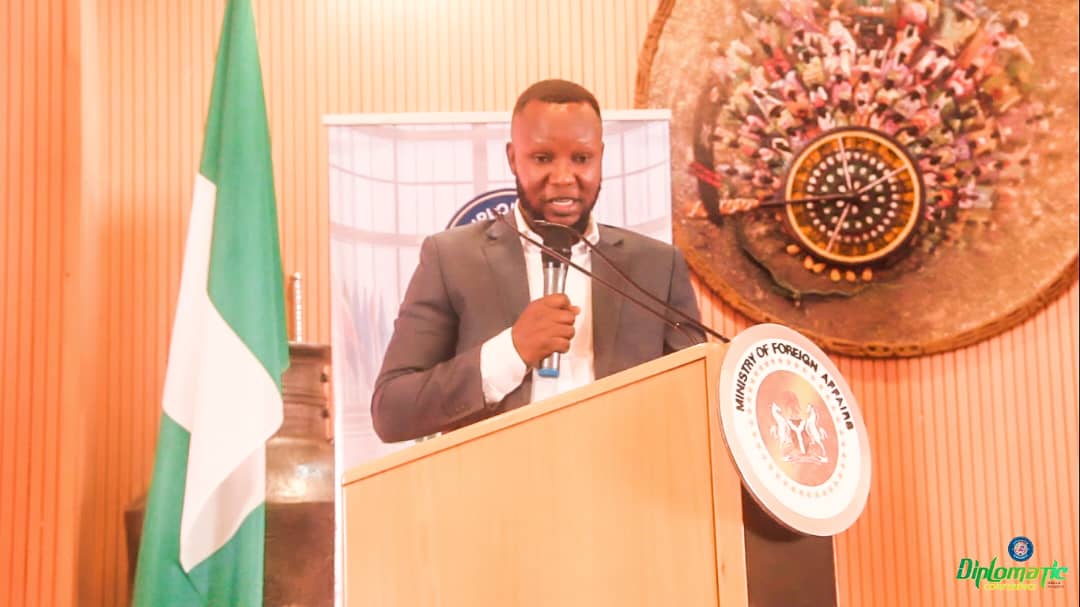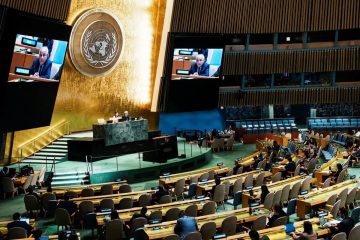By Augustine Igweshi, Executive Director, Center for Peace Advocacy and Sustainable Development (CEPASD)
Introduction
In a world often shaken by the thunder of guns, the cries of the displaced, and the silent grief of broken families, the idea of peace may sometimes feel distant and almost unattainable. Yet, it is in these very moments of chaos and violence that the human spirit has the greatest capacity to seek and find peace. As someone deeply committed to peacebuilding, I believe that peace is not merely the absence of war but the presence of justice, compassion, and dignity. Finding peace despite war and violence is one of humanity’s greatest challenges, but also one of its noblest pursuits.
Understanding the Context of War and Violence
The African continent, like many parts of the world, has endured the scars of wars, armed conflicts, terrorism, and communal violence. From the decades-long civil wars in Liberia and Sierra Leone, to the Rwandan genocide, to current insurgencies in the Sahel and Northeast Nigeria, millions of lives have been lost and even more displaced. According to the United Nations High Commissioner for Refugees (UNHCR), by the end of 2023 more than 43.3 million people were forcibly displaced worldwide due to conflict and persecution, with Africa hosting the largest share of refugees and internally displaced persons (IDPs).¹
Violence is not only physical; it also manifests structurally in the form of inequality, exclusion, and systemic injustice. These conditions perpetuate cycles of conflict, making peace seem fragile and short-lived. However, history and lived experience teach us that even in the darkest of times, communities and individuals can find pathways to peace.
The Meaning of Peace in the Midst of Conflict
Peace, in its truest sense, is not simply the silencing of guns. It is an internal and collective condition that allows human beings to live with dignity, to pursue their dreams, and to build relationships rooted in respect and equality. Finding peace in times of war means recognizing that despite the chaos around us, we have the power to create pockets of hope, to resist hatred, and to hold onto humanity.
Examples abound. During the Liberian civil war, grassroots women came together in what became known as the Women of Liberia Mass Action for Peace, led by Nobel Laureate Leymah Gbowee. Their courageous insistence on dialogue and reconciliation eventually contributed to the 2003 Accra Peace Agreement.² Similarly, in Rwanda after the genocide, local communities embraced gacaca courts-traditional mechanisms of justice that, though imperfect, became instruments of truth-telling and reconciliation, helping to process nearly two million cases between 2005 and 2012.³
These stories remind us that peace is possible even when the world is drenched in violence.
Pathways to Finding Peace
- Inner Peace as a Foundation
Peace begins with the individual. War and violence often leave deep scars of trauma, bitterness, and despair. Healing requires cultivating inner peace through forgiveness, resilience, and hope. Faith, spirituality, meditation, and psychosocial counseling have proven invaluable for individuals navigating grief and loss. Nelson Mandela’s life is a testimony to the transformative power of inner peace-despite 27 years in prison, he chose reconciliation over vengeance, offering a path to national healing.⁴ - Community-Based Peacebuilding
In many African societies, local structures of dialogue-elders’ councils, interfaith initiatives, and youth forums-play a central role in resolving disputes. These traditional mechanisms help build trust, rebuild broken relationships, and restore social cohesion. Community-driven initiatives also ensure that peace is not imposed from outside but owned from within. - Education and Empowerment
War often thrives where ignorance, poverty, and exclusion are rampant. Education empowers individuals with the tools to challenge manipulation, resist extremism, and advocate for justice. UNESCO has consistently emphasized that education is a powerful “multiplier of peace,” equipping youth with civic values and employable skills that reduce their vulnerability to violent extremism.⁵ - Justice and Accountability
There can be no sustainable peace without justice. Victims must feel that their pain has been acknowledged, and perpetrators must be held accountable. Transitional justice mechanisms-truth commissions, reparations, and legal processes-are essential in healing wounds and ensuring that violence does not repeat itself. The African Union’s Policy on Transitional Justice (2019) underscores this by linking peace, justice, and reconciliation as inseparable.⁶ - Global Solidarity and Humanitarian Action
Peace in conflict zones requires the support of the international community. Humanitarian assistance, peacekeeping missions, and advocacy for human rights are lifelines for affected populations. Yet, beyond aid, solidarity also means amplifying the voices of those living through war, reminding the world that their humanity must not be forgotten.
Personal Reflections
As I reflect on my own journey in peace advocacy, I have seen both the devastation of violence and the resilience of people who refuse to give up. I have worked with communities where young people, despite the trauma of displacement and loss, still dream of building businesses, leading their communities, and contributing to a peaceful Africa.
At CEPASD, we often emphasize that peace is not the responsibility of governments alone. It is the duty of every individual-young or old, male or female, rural or urban. Each act of kindness, dialogue, and forgiveness contributes to weaving the fragile fabric of peace.
Conclusion: Peace as a Continuous Journey
Finding peace despite war and violence is not a one-time achievement but a continuous journey. It is about choosing dialogue over revenge, hope over despair, and compassion over hatred-day after day, even when it feels impossible.
Our world is in desperate need of peace champions: individuals and institutions willing to rise above personal interests and work tirelessly for the collective good. Whether through education, advocacy, reconciliation, or humanitarian support, we each have a role to play.
Peace, after all, is not the privilege of a few but the right of all. And even amid the thunder of war, the whisper of peace can still be heard-if only we have the courage to listen and act upon it.
References
African Union (2019). African Union Transitional Justice Policy. Addis Ababa: African Union Commission.
UNHCR. (2024). Global Trends: Forced Displacement in 2023. Geneva: United Nations High Commissioner for Refugees.
Gbowee, L. (2011). Mighty Be Our Powers: How Sisterhood, Prayer, and Sex Changed a Nation at War. New York: Beast Books.
Clark, P. (2010). The Gacaca Courts, Post-Genocide Justice and Reconciliation in Rwanda: Justice without Lawyers. Cambridge: Cambridge University Press.
Mandela, N. (1994). Long Walk to Freedom. Boston: Little, Brown & Co.
UNESCO. (2017). Education for Sustainable Development Goals: Learning Objectives. Paris: UNESCO.



